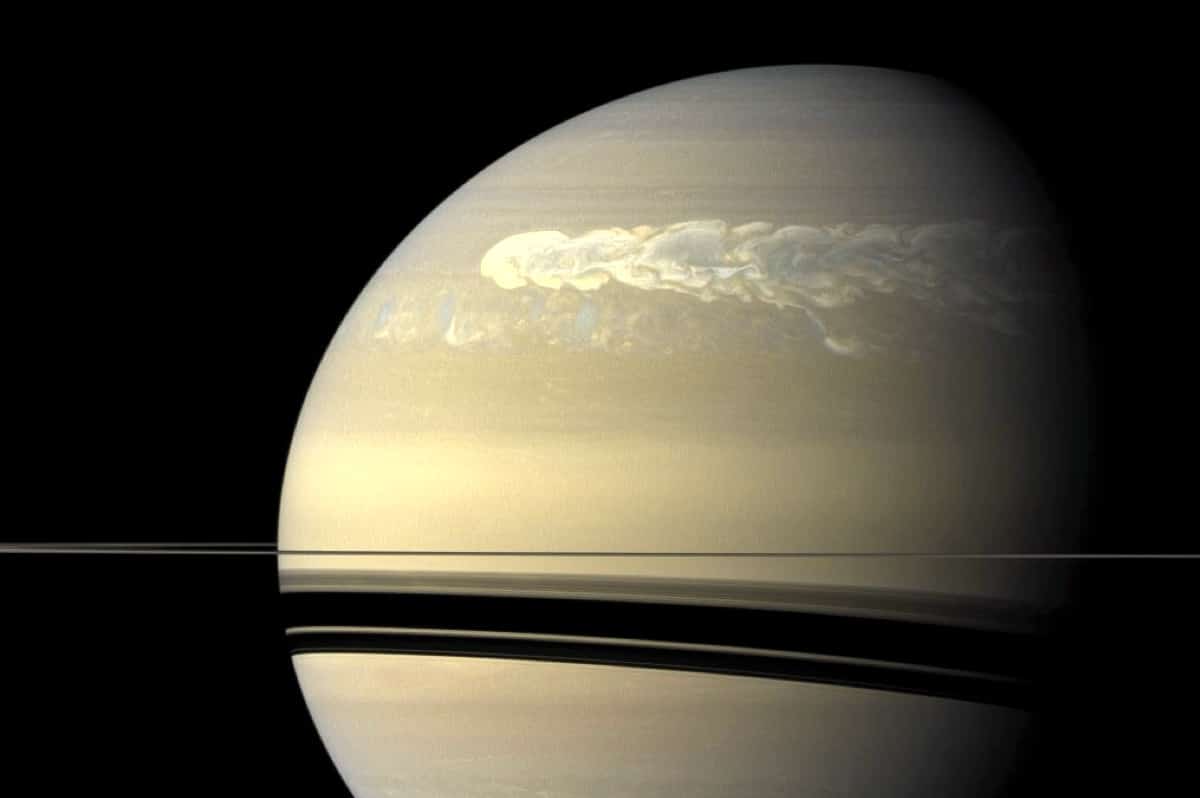The largest hurricane in the solar system, the Great Red Spot of Jupiter, has been going on for hundreds of years, and only in recent years have scientists seen signs of its weakening, although this has not yet been proven. But the surface of the neighboring gas giant Saturn is far from being so spectacular. But hurricanes rage on it, which can last for centuries. This was shown by the new work of astronomers from the University of California at Berkeley, whose article published In the magazine Science Advances.
How exactly storms occur on Saturn is not exactly clear, but it happens every 20-30 years. Its atmosphere consists mainly of hydrogen and helium, with some methane, water vapor and ammonia. Tracking the movements of these “impurities” at different heights, scientists observe the emergence, development and weakening of hurricanes.
The fact is that during a storm, ammonia is shed “rains” to a great depth. But if moisture on our planet can accumulate in water bodies, then on Saturn, which has no solid surface, ammonia forms areas of increased concentration. From there, it can evaporate, rising higher. Thus, storms form areas of anomalous distribution of ammonia. At medium altitudes, directly below the ammonia clouds, its concentration drops, and even a couple of hundred kilometers below it rises again.
Saturn in the radio range. The light band at the top is the trail of the 2010 hurricane / © RJ Sault, I. de Pater
Using the VLA array of radio telescopes, Prof. Imke de Pater and her colleagues studied such an “ammonia anomaly” due to the 2010 storm. However, in addition to it, scientists have noticed similar traces associated with all previous hurricanes that have been observed on Saturn since 1876. Another “ammonia anomaly” may refer to a storm of even more advanced age, although the authors of the work are not completely sure about this.
This means that Saturn’s hurricanes can continue, if not for centuries, then more than a century – for sure. This further emphasizes the marked difference between it and neighboring Jupiter. Despite the proximity of their sizes, chemical composition, orbital positions, climate and atmospheric dynamics, the two gas giants differ sharply. It is still not clear where this difference comes from, but it is likely that the different behavior of the storms will prompt the answer.


